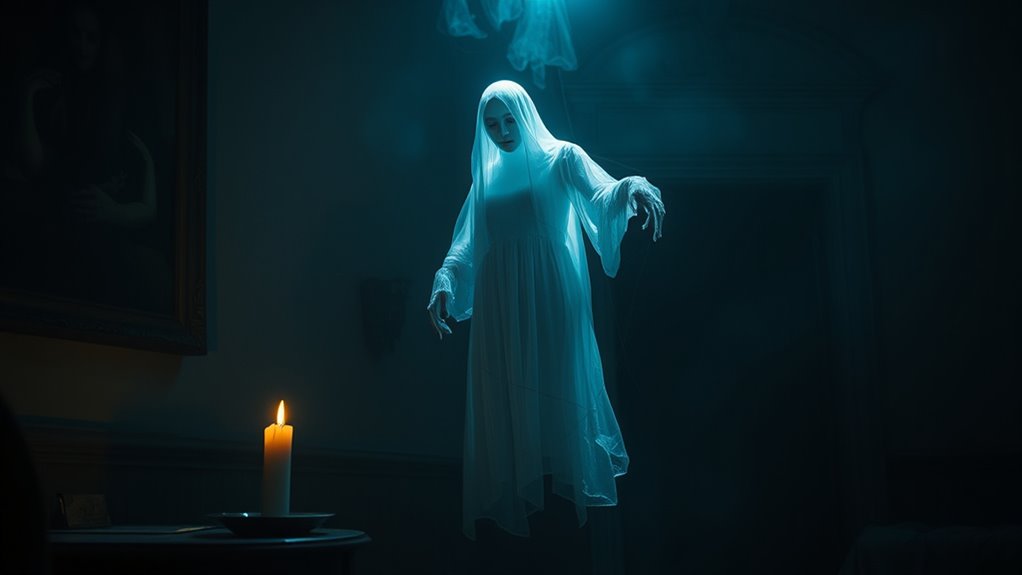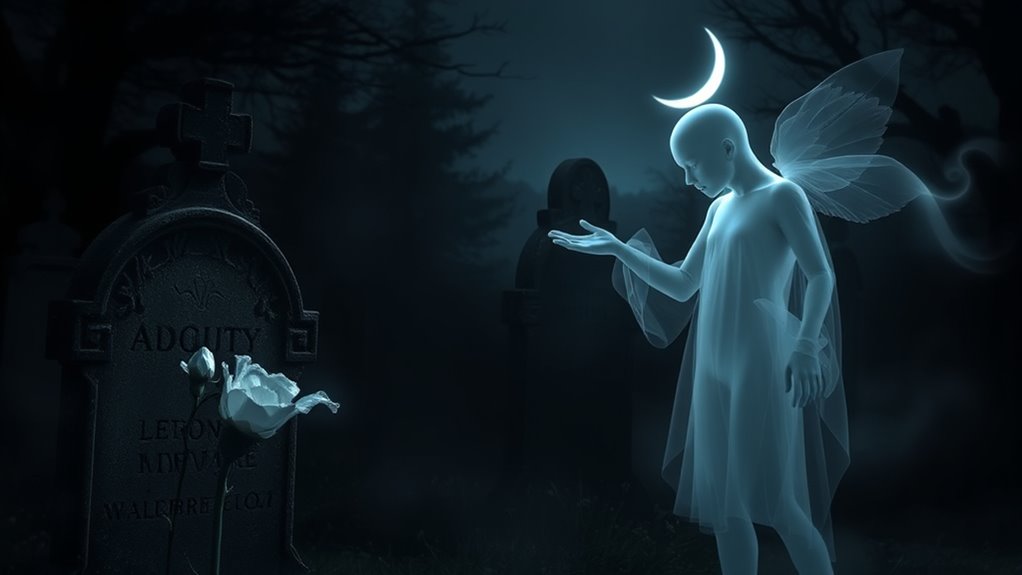Not all ghosts are evil; many actually represent neutral energy. They often replay past events without any malice. Some ghosts may be human beings with unfinished business, while others might evoke comfort and warmth. The misconception that all spirits are malevolent comes from cultural portrayals and sensationalism. By understanding the nature of ghosts, you can reduce fear and gain a more balanced perspective. There’s so much more to discover about ghostly phenomena if you keep exploring!
Key Takeaways
- Ghosts often represent neutral energy, replaying past events without inherent good or evil traits.
- Many ghostly encounters involve harmless activity, indicating they may not be malevolent.
- Positive spirits can exhibit warmth and unconditional love, contrasting with negative portrayals in media.
- Misconceptions about ghosts stem from cultural sensationalism, leading to misunderstandings of their true nature.
- Understanding ghosts as stuck energy seeking acknowledgment can help reduce fear and promote closure.

Are all ghosts evil, or is there more to the story? When you think about ghosts, you might envision malevolent beings lurking in the shadows, ready to release chaos. However, that portrayal only scratches the surface of what ghosts truly are. In reality, ghosts often represent neutral energy, replaying past events without any inherent good or evil traits. They’re distinct from spirits, which can embody both positive and negative qualities based on their past human experiences.
You might be surprised to learn that many encounters with ghosts involve harmless ghostly activity, such as sounds or movements that don’t have malicious intent. Instead of being wicked entities, these ghosts may simply be human beings whose energy remains tethered to the physical world, perhaps due to unfinished business or lingering emotions. In fact, positive spirits often emanate warmth and unconditional love, reflecting the brighter aspects of their former lives. This means that not all entities you encounter are out to deceive people or cause harm. Humor can also be a coping mechanism for those who experience paranormal phenomena, allowing them to approach difficult situations with a lighter heart.
It’s vital to differentiate between ghosts and negative spirits. While negative spirits can evoke feelings of unease and fear, they often don’t possess the malevolence typically depicted in media. Much of the misconception surrounding ghosts stems from cultural portrayals that sensationalize their nature, leading us to believe that all ghostly encounters are sinister. In truth, many experiences are neutral, showcasing the complexity of individual experiences rather than a blanket assumption of malevolence.
Moreover, it’s important to recognize that ghosts are often seen as stuck energy rather than malevolent beings. They don’t have the deceptive intentions associated with demons, which are entities known for their harmful capabilities. When you encounter ghostly activity, remind yourself that these energies may simply be seeking acknowledgment or closure from their past lives. Understanding the nature of global intelligence can help demystify the complexities surrounding various phenomena, including ghostly encounters.
Frequently Asked Questions
Is There Any Real Evidence of Ghosts?
You might wonder if there’s real evidence of ghosts. While many people share personal experiences, scientific validation is scarce.
Paranormal investigators often use tools like EMF meters and audio recorders, but results can be inconclusive. Some suggest that psychological factors, like pareidolia, play a role in ghost sightings.
Additionally, cultural beliefs shape how you perceive these phenomena, leading to diverse interpretations of what you encounter in reportedly haunted locations.
How Do You Know if a Ghost Is Watching You?
You can often tell if a ghost is watching you through various signs.
Look for cold spots, a feeling of being observed, or shadows in your peripheral vision. You might also experience tingling sensations or a heavy atmosphere.
Listen for unusual sounds like whispers, knocks, or footsteps, which could indicate a ghost’s presence.
If you feel uneasy, try communicating respectfully; it can help clarify the ghost’s intentions and ease your discomfort.
Conclusion
So, are all ghosts evil? Well, if you’ve ever met a cranky old ghost who just wants to haunt their favorite armchair, you might think twice! Not all spirits are out for blood; some just want to relive the glory days or remind you to pay your taxes. So, next time you hear a spooky noise, don’t grab a crucifix—maybe offer a cup of tea instead. Who knows? You might just make a new spectral friend!









